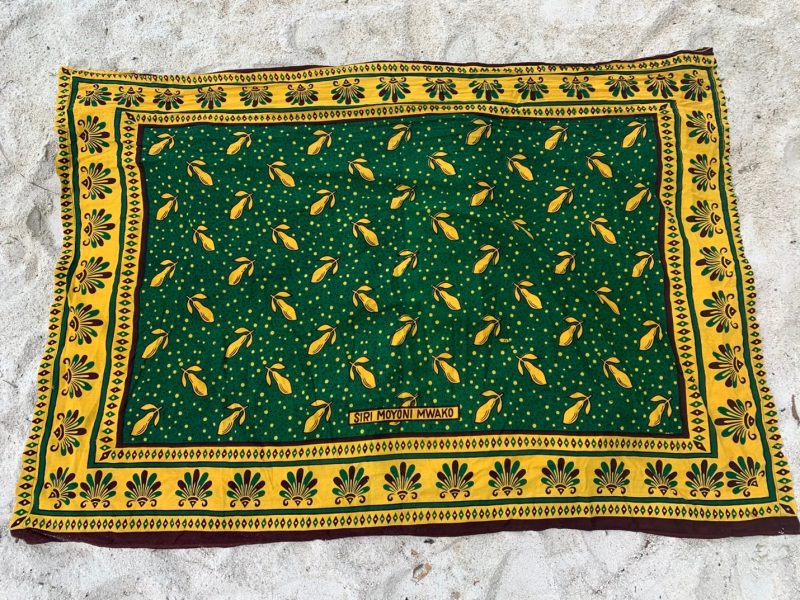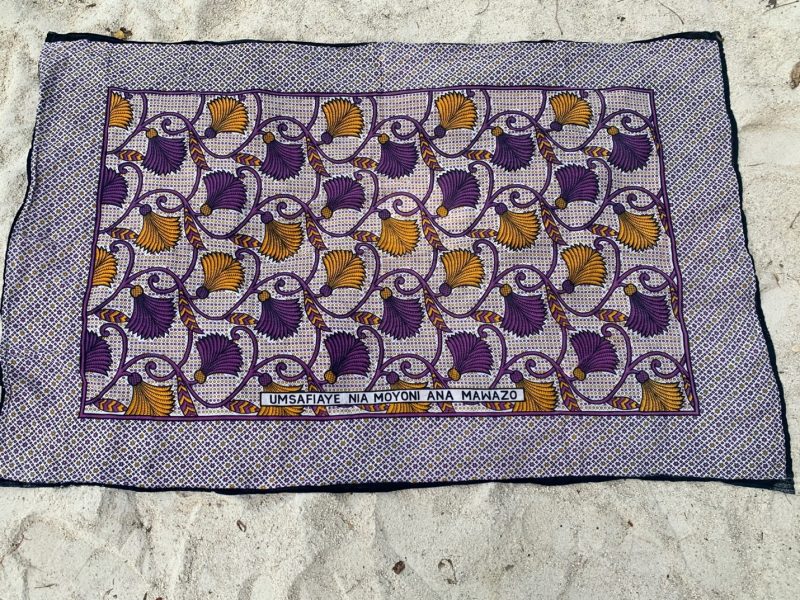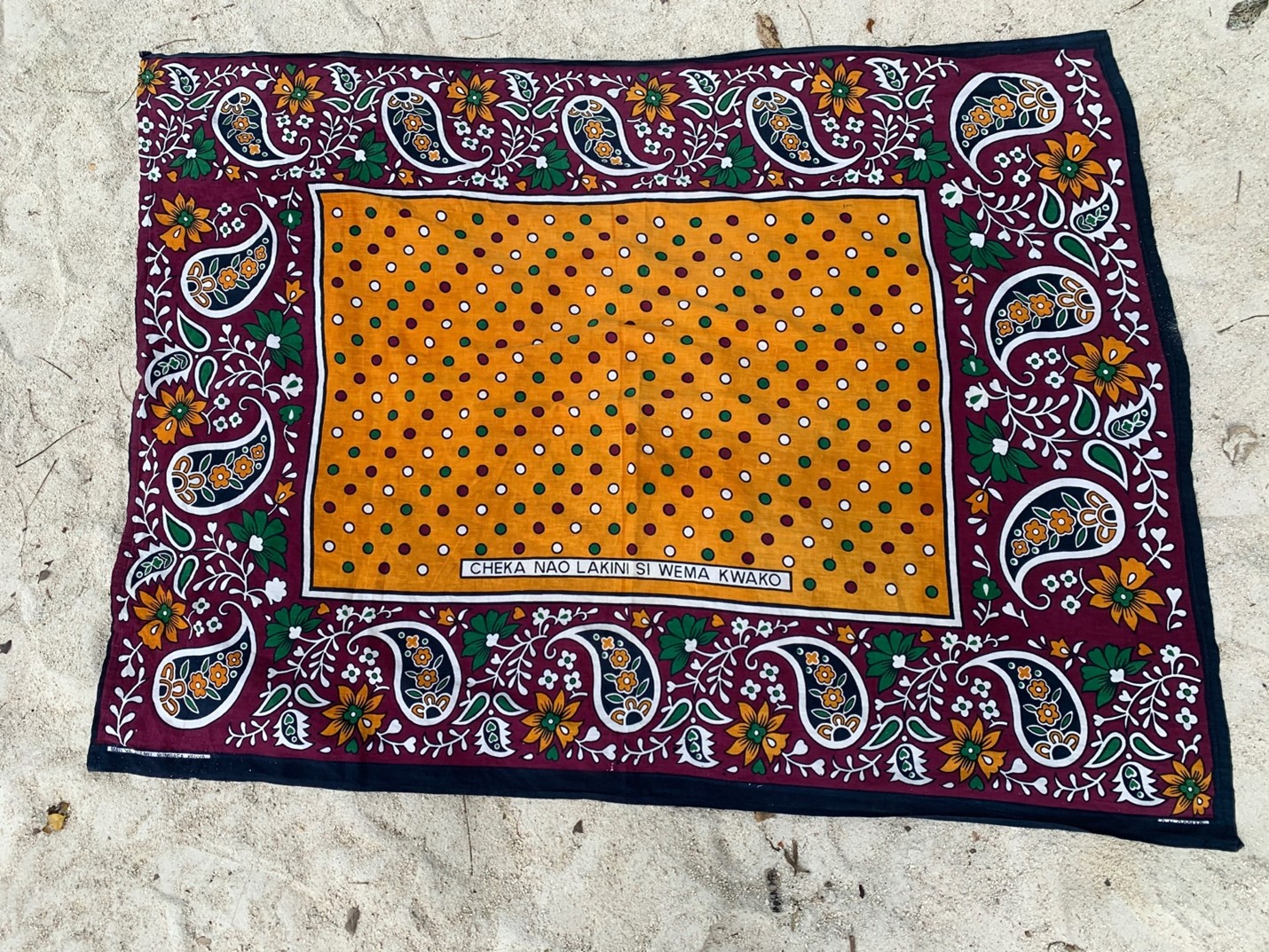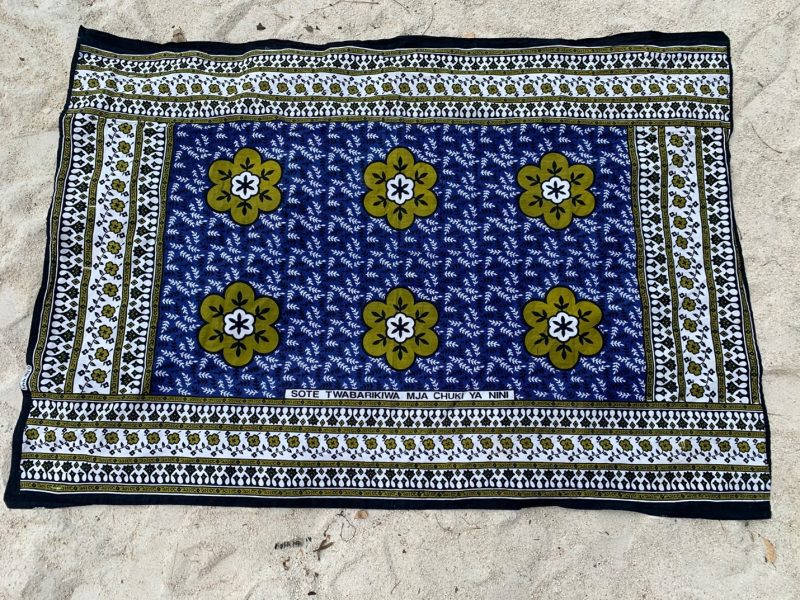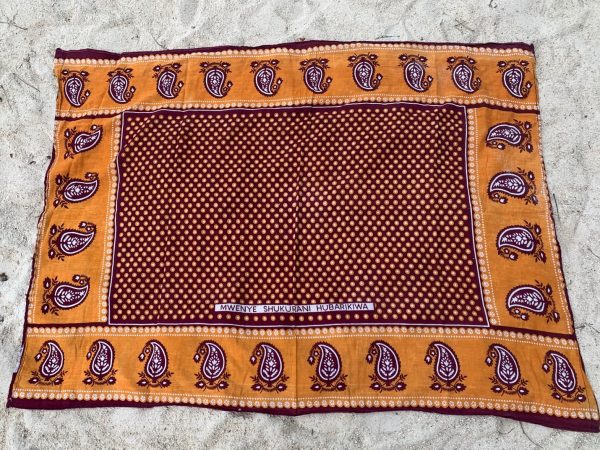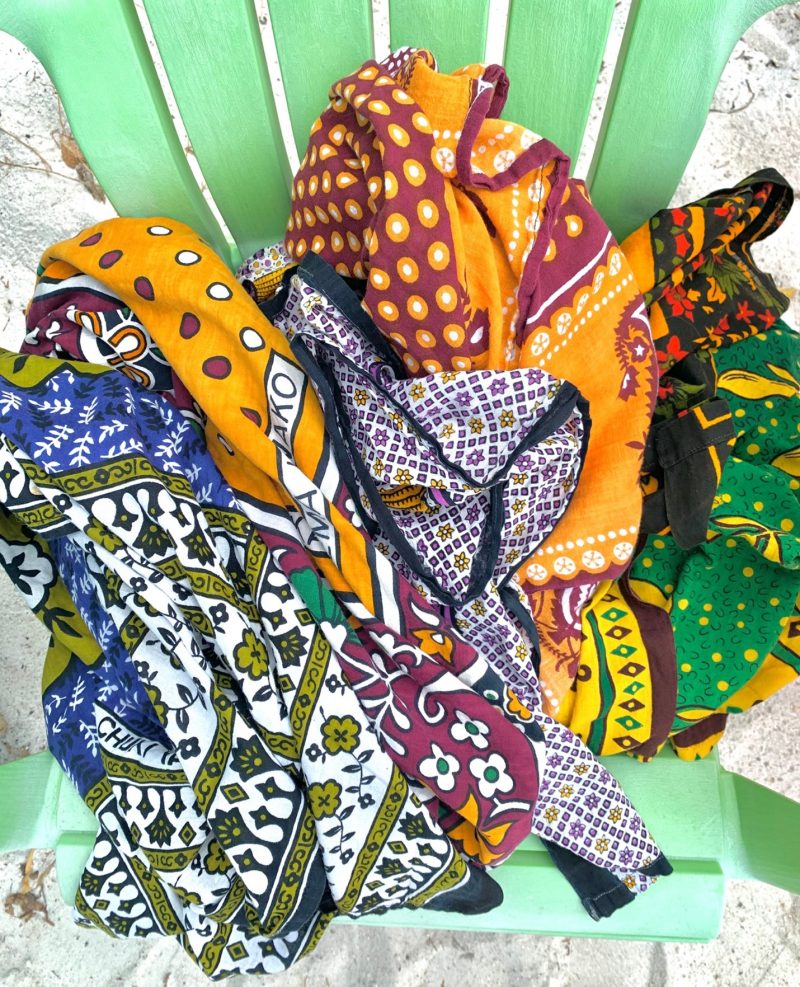The kanga is a traditional East African article of women’s clothing. These cloth pieces are uniquely printed with vibrantly colored designs in geometric, floral, and other arrangements.
Kangas are only found in Kenya and Tanzania. They are a popular item of everyday clothing among women in the Swahili culture, and they are also occasionally worn by men. Kangas are frequently given as hospitality gifts, and it is said that every woman should own a thousand of them.
Lorena Petani from Chicago, Illinois, has always been intrigued with kangas. She decided to create a photographic series detailing several examples of the fabric and to discover the stories behind them.
History
The textile has been worn in East Africa since the mid-19th century. They originated among Muslim women in Mombasa and Zanzibar. Portuguese traders imported cloth bandanas, and women began to sew six of these colorful pieces of cloth together to create a unique piece that they could wear modestly. They were also used as head coverings for women of the Muslim faith. Local traders saw the potential for a new trend and began making hand-stamped cloth pieces to sell in the markets. The new items quickly took off in popularity.
How Kangas Are Made
Kangas, also called ‘leso’ in Kenya, are rectangular pieces of 100 percent cotton cloth. They are printed with a brightly colored decorative border. They also include an example of a Swahili proverb, making each design unique. The textile takes its name from the Swahili word for the guinea fowl. One of the most popular traditional designs is a pattern that closely resembles the black- and-white feathered pattern on these birds.
Kangas are lighter and thinner than another traditional form of African cloth, the kitenge. The kitenge is popularly used for making bedding, cushions, curtains, and clothing.
Traditionally, kangas were made by taking a piece of locally woven cloth and hand-stamping them with colorful dyes using a hand-held wooden block. Today, they are produced in factories that use industrial rotary screen-printing machines. The process of creating kangas is intricate.
First, the design is painted by hand. The design is then transferred to a computer, where the layers of the design are translated into information that can be used by the screen-printing machine. The screens are placed on the rollers for printing. In this process, the different rollers each carry a single color of the design. This means that there is a wide variety of shades and hues available to print on the fabric.
Until the 1960s, commercially made kangas were frequently printed in Japan, Europe, China, and India, but factories in Tanzania and Kenya began printing them locally at this time.
How Kangas Are Used
Kangas are truly versatile textiles and have dozens of daily uses for the people of Tanzania and Kenya. They are used as daily clothing and help to express a person’s pride in their cultural identity. They are also used in practical applications as sleepwear, household textile uses like tablecloths, aprons, curtains, and towels, and as a wrap for carrying babies. Traditionally, kangas are part of wedding attire among the coastal Swahili people. The “wedding” design worn by the bride, also known as the kisutu, is red, black, and white.
Sayings Printed on Kangas
At the beginning of the twentieth century, Swahili proverbs were added to the designs. Sayings, aphorisms, and slogans were also printed on the textiles. The slogans and visual symbols can help women express themselves non-verbally to others in their community. Some popular texts include “Sina siri nina jibu”, which means “I have no secrets but I have an answer,” “Adui mpende”, which means “love your enemy,” and “Akili ni mali,” which means “wits are wealth.”
Political Expression
In addition to colorful floral and geometric patterns, some kangas feature images of important politicians. These images can be used to memorialize well- regarded figures in local and national politics.
Lorena Petani’s Photos
Petani has been fascinated with kangas ever since she saw examples of the
textile that her friends brought home from Africa. She has collected various
examples of these unique and beautiful fabrics and produced a photographic series.
Siri Moyoni Mwako
This proverb means “Secret in your heart.” The pattern has a forest green background and a rich yellow border with yellow florals.
Umsafiaye Nia Moyoni Ana Mawazo
The saying means “He who purifies his thoughts in his heart has thoughts.” The design has a white background cross-hatched in a blue-violet color. The design features a repeating arrangement of dark yellow and navy blue fans surrounded by curving lines. The border is white with a closely cross- hatched navy blue design.
Cheka Nao Lakini Si Wema Kwako
This saying means “Laugh with them but kindness to you.” This is another
example of an intricate paisley and floral pattern with a center panel featuring polka dots in a striped arrangement.
Sote Twabarikiwa Mja Chuki Ya Nini
This pattern has a white background with cornflower blue, sky blue, black, and olive green designs. In the center of the fabric, there are six olive green flowers with white centers. The background is a cornflower and sky blue repeating floral design. The border is striped with intricate designs in black, white, and olive green.
Searching for Kangas
Kangas can be bought on every street corner in Tanzania and Kenya, but Biashara Street in Mombasa has some of the most famous vendors. Kangas are also available online through authentic African websites.
Kangas and Their Cultural Significance
The kanga is a culturally important textile that not only expresses ideas but also forms a unique part of daily life. Lorena Petani wants people to understand the importance of kangas to East African culture.

